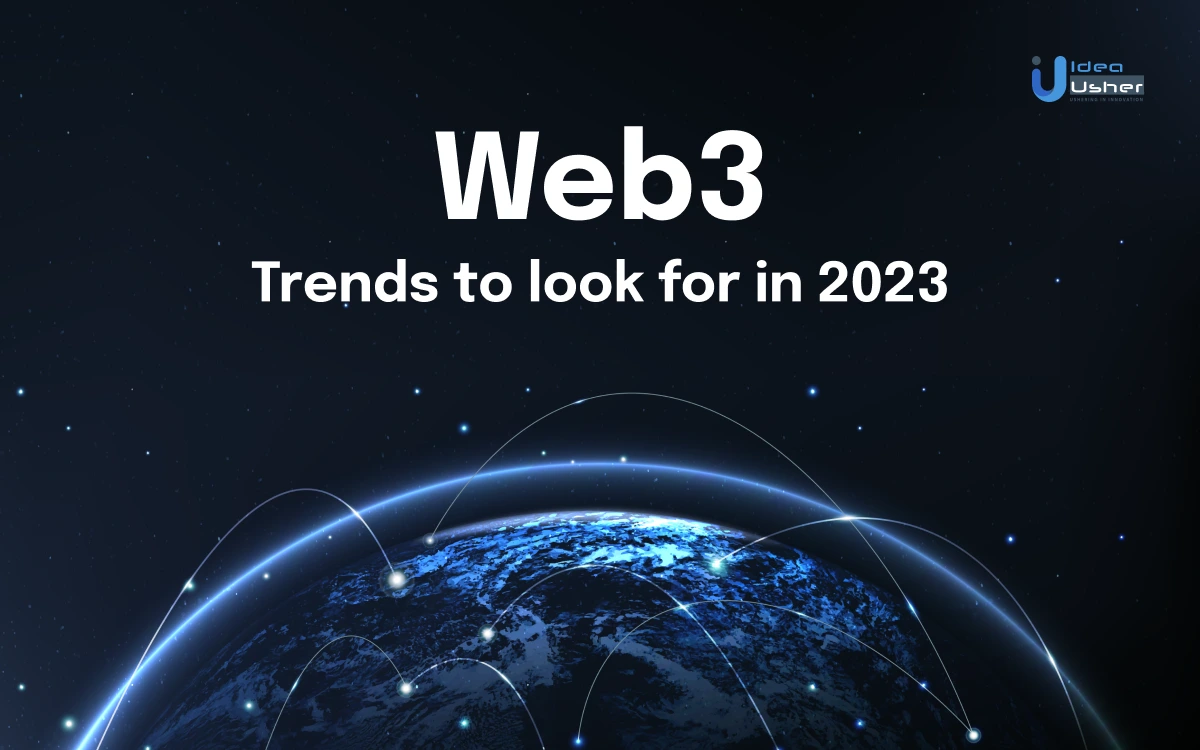
Web 3.0, often known as the next generation of the internet, emphasizes user autonomy by employing decentralized protocols. In Web3, users may contribute to the administration and upkeep of the protocols themselves, and they can utilize the platforms for free in exchange for data. The idea behind Web3 is to create authentic online communities and put digital democracy into reality with the aid of technologies like blockchain, cryptocurrencies, non-fungible tokens (NFTs), and decentralized autonomous organizations (DAOs). But why is Web3 such a promising technology, and what are the latest Web3 trends?
Top 10 Web3 Innovation Trends
As Web3 continues to use blockchains, cryptocurrencies, and NFTs to return ownership power to users, many businesses are using this technology to boost their brands. The following are some Web3 trends that might emerge in the coming year:
1. Decentralized Social Networks
Web3 aspires to create a social network that is decentralized. To combat trolls and spammers, Tesla’s CEO has hinted at the creation of a social network where users would pay a modest bit of cryptocurrency every time they submitted a comment. These ideas were discussed during the legal dispute over Musk’s acquisition of Twitter.
Web3 proponents argue that a decentralized social network wouldn’t be vulnerable to censorship. Right now, corporations like Meta and Twitter regulate what people may say. Unrestricted free expression on Web3 is an innovation that must be evaluated by society as a whole, including governments and politicians.
2. Industry To Increase Emphasis On Cybersecurity
Web3 gives data ownership, openness, and fewer intermediaries, but it creates new security risks. Attacks such as rug-pulling, ice-phishing, and hacking into the logic of smart contracts are only a few examples. Crypto losses will drive the need for blockchain security. Since 2021, over 46,000 people have lost over $1 billion in crypto frauds, according to a 2022 Federal Trade Commission study. One of the latest crypto market makers to be hacked is Wintermute, which lost $160 million.
Scammers have targeted NFTs and cryptocurrencies alike. With increased concerns in the space, a number of startups are creating Web3 security, data, monitoring, and storage solutions, which is attracting industry investments:
- Immunefi, a DeFi bug bounty and security platform, raised $24 million in Series A.
- CertiK, a renowned Web3 security business, raised $88 million in Series B3 funding earlier this year.
- Halborn, a cybersecurity startup for traditional financial and blockchain clients, raised $90 million in Series A funding.
More Web3 security efforts will prevent scams and encourage firms to engage in Web3 initiatives.
3. Greenifying Web3
Web3’s green credentials are questionable, even for its most ardent supporters. At its height, the Bitcoin blockchain network consumed 130 terawatts per hour, creating 772 kg of CO2 in each transaction. This is unsustainable, and Tesla CEO Elon Musk highlighted this energy use as a reason his business was leaving the technology.
Since then, blockchain and Web3 technologies have been optimized to utilize less energy. The Ethereum network just switched from proof-of-work to proof-of-stake, reducing energy demand by 98%.
In 2023, Web3 initiatives will consume less energy and leverage technology to achieve green goals. The World Economic Forum said that the technology might help organizations collaborate and implement joint climate change mitigation solutions. “Regenerative financing” (ReFi) tries to encourage initiatives that repair or conserve “resources vital for planetary welfare.”
4. Market Growth With Metaverse Investments And M&A Deals
The Web3 domain will continue to draw investments driven by two forces: metaverse-related ventures and metaverse mergers and acquisitions deals. Just in the first five months of 2022, more than $120 billion had been invested in building out metaverse technology and infrastructure, more than double the $57 billion in investments made in 2021.
There are various causes that stimulate interest from both investors and brands:
- The use of mixed reality (MR), augmented reality (AR), and virtual reality (VR) to bridge the gap between the virtual and the actual world is gaining popularity (VR).
- Metaverse might improve manufacturing (digital prototypes), hospitality & tourism (customer experience previews), and healthcare (e.g., accelerate disease assessment and treatment).
- Strong user base due to widespread use in entertainment, content production, social networking, education, and training.
- Improve consumer experience and e-commerce.
As a result, numerous end-user players such as Meta, Gucci, Nike, Starbucks, and Adidas are entering the metaverse in different ways to experiment with new methods to upgrade the online experience with clients. As the metaverse and NFTs continue to soar, additional M&A possibilities will emerge to speed the construction of immersive experiences and assist in establishing large-scale communities anchored by engaging content. Gaming is one of the largest bets.
5. NFTs
Non-fungible blockchain tokens may represent something unique, unlike cryptocurrencies, which may have millions of similar tokens, and it is among one of the most talked Web3 trends. Most people know NFTs as computer artwork that sold for hundreds or millions of dollars (until the market crashed this year, at least).
Tokenizing goods, data, and ideas in the digital and physical realms are their ultimate worth, according to proponents of a decentralized web3. NFTs in the decentralized internet may unlock and interact with our digital purchases. They may be smart contracts or keys to our virtual metaverse residences.
In 2023, “utility NFTs” will have priority above “virtual art” NFTs. This should improve their grasp of this potentially disruptive technology and their place in the Web3 ecosystem.
6. Growing Government Intervention And Regulation In The Web3 Space
As new technology transforms economies, societies, and the environment, governments will likely (and some would say must) control it. Wyoming and other US states have passed “Web3-friendly” laws. Web3 enterprises will obtain preferential tax benefits in return for regulation and control. Colorado was the first state to accept cryptocurrencies for taxes and fees this year.
Dubai is eager to adopt Web3 and cryptocurrencies. The emirate has devised economic initiatives to lure Web3 firms to set up operations on its territory and is advertising itself as a natural home for innovation in artificial intelligence, cloud computing, and metaverse technologies, which are closely tied to Web3 advances. India’s e-rupee and China’s Digital Yuan may help other countries become Web3-friendly in 2023.
7. BAAS
The acronym BAAS describes a recent development in the realm of blockchain: Brands as a Service. It’s a web-based business that lets users build digital goods using blockchain technology. Businesses and individuals require access to banking services in order to engage with this highly regulated market.
8. Flux
Flux is Web3’s non-intrusive data layer. If your smart contract needs access to financially safe data feeds on anything, Flux is the cross-chain oracle for you. Web 3.0 apps and distributed projects may be created with the aid of Flux.
9. Low Code Application Building Software
Companies can now create apps far more quickly and with much less hand-coding thanks to low-code development, a visual drag-and-drop approach to development. Since the introduction of Web 3.0, there has been a growing movement to completely do away with low-code and no-code app developments.
10. Cloud Technology
Through the use of cloud computing, businesses no longer experience restrictions to their physical locations. As businesses gradually reopen following periods of isolation, we should expect to see a transition away from hurriedly built cloud services and toward cloud-native systems as a means of mitigating risk in light of the future’s unpredictability.
What Makes Web 3.0 An Ideal Technology?
1. Semantic Web
The Semantic Web simplifies web data access, sharing, and reuse. It envisions machines understanding human language (natural language). Humans also search, access, and integrate information better.
It draws on AI ideas like Knowledge Representation (KR), Natural Language Processing (NLP), and Machine Learning (ML). Data integration, modeling, databases, and information retrieval also inform the web. Some Semantic Web technologies are OWL, SPARQL, DAML+OIL, SKOS, and SWRL.
2. AI.
Web 3.0’s biggest draw is AI (AI). From Siri on your iPhone to Alexa at home, AI is everywhere. AI does more than answer queries and plays music. It can also learn, decide, and solve issues on its own. AI will transform how we work, study, and live, according to experts.
3. 3D Graphics
Web 3.0 relies on 3D visuals. Computers can show three-dimensional things in full color and realistic detail. This technology alters computer use. It lets users touch and move virtual items on the screen. This technology enables individuals to roam freely in a rich environment.
4. User-centric
Web 3.0 is user-centric. It’s crucial to the idea. Instead of trying to sell customers anything, websites should focus on their needs.
5. Ubiquity
Web 3.0 seeks universal computing. It defines devices and services available everywhere, anytime, and from any device (e.g., mobile phones and PDAs). Ubiquitous computing keeps users linked. Every gadget can access global data and vice versa.
6. Blockchain
Web 3.0 relies on blockchain. Decentralized ledgers allow digital asset exchanges without central verification. Blockchain can monitor items and land ownership, but its most renowned usage is as a payment system. Bitcoin and other cryptocurrencies like Ethereum use blockchain technology to transmit money worldwide without banks or governments.
7. Decentralize
Web 3.0 is decentralized. Users control their data, and no third party can manage the network. Web design prevents censorship and tampering. No one can stop or censor you online. In contrast, Web 2.0 was centralized, meaning Facebook and Google possess much of our data. These corporations can block websites, censor material, or shut down networks (like when China blocked WhatsApp).
8. Edge Computing
Edge computing exploits data at the network edge near data sources. This avoids sending data to a central server before processing. The processes may take place locally and sent up when ready. Fog or cloudlet computing is edge computing. Edge computing is decentralized, unlike its predecessors. Thus, it relies less on data centers or cloud servers and more on local devices like smartphones, sensors, wearables, etc.
Web 3.0 Blockchain Stack
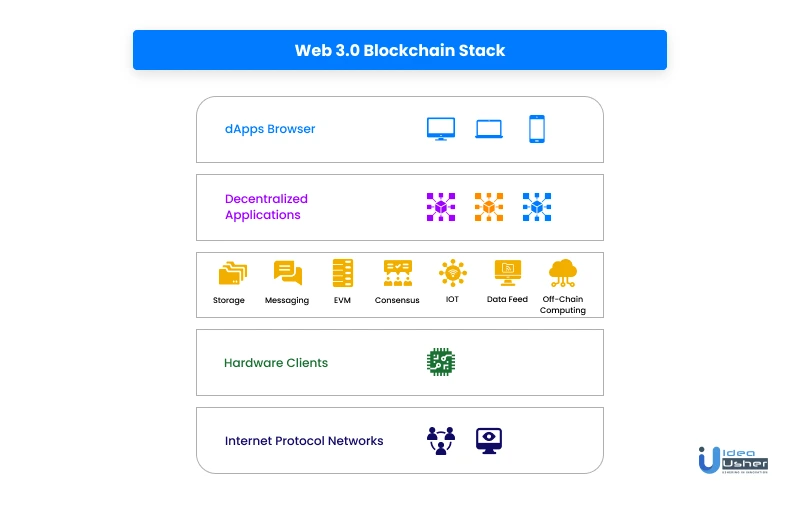
Why Web 3.0 Is Good For Your Business?
With web 3.0, businesses will become more open and customer-focused. Everything that was flawed in how businesses were run regarding users’ data will undergo a sea shift. The question is, how will corporations leverage the new features of the web? As the answer, know that established and startup businesses will welcome Blockchain and the possibilities it offers. You can implement blockchain technology into your apps, making all data public and easily accessible.
Benefits Of Web 3.0 In Your Business
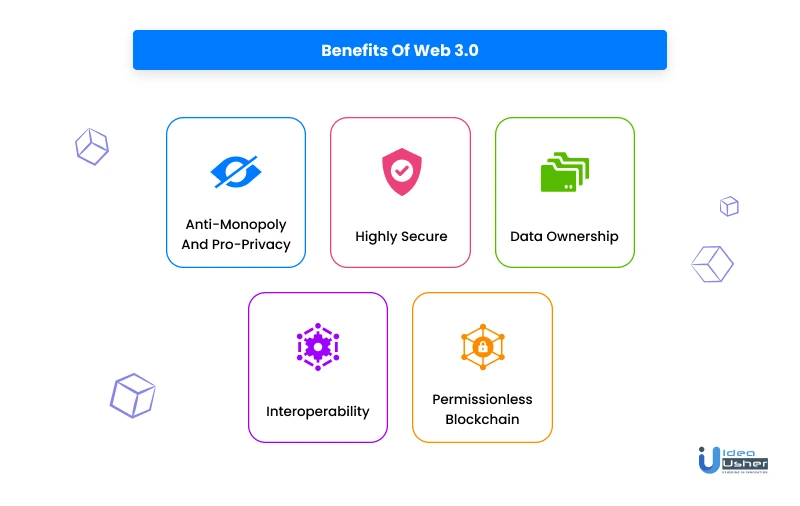
1. Pro-Privacy and Anti-Monopoly
Pro-privacy and anti-monopoly models will be on the table owing to Web 3.0’s new capabilities. Because of this, centralized systems that retain ownership of their users’ data will not be encouraged to do so. Decentralization and individual privacy will emerge as driving forces in the upcoming shift. Since consumers may now decide who has access to their data, digital firms will no longer have a monopoly, and data privacy breaches will be nearly eliminated.
2. Highly Secure
We may expect Web 3.0 to be far more secure than its predecessors. Because of the decentralized and spread structure of the network, hackers will no longer be able to break in without leaving a digital footprint.
3. Data Ownership
Until recently, digital giants controlled and profited from consumers’ data. User data will be fully owned by them in Web 3.0 due to the utilization of blockchain technology. Information sent via the network will be encrypted completely. Users will have control over what data is made available to businesses and ad networks and may be compensated for doing so.
4. Interoperability
With Web 3.0’s capabilities, users wouldn’t be limited to using data from just one app. As a result, you won’t have to worry about getting locked out of Web 3.0 because you use an incompatible device.
5. Permission-less Blockchain
Web 3.0 blockchain will not require a central authority. With the creation of an address, anybody may join the network and participate in its activities. Consequently, users will no longer be denied service based on their gender, socioeconomic status, sexual orientation, physical location, or any other social element. It will also facilitate the swift and inexpensive movement of digital assets and wealth across international borders.
Final Thoughts
Web 3.0 will alter not just our personal but also our collective digital interactions. Every type of company, from the tried-and-true to the innovative, will feel the reverberations of Web 3.0 blockchain technology. However, moving from Web 2.0 to Web 3.0 will not happen suddenly. That is to say, companies will have an opportunity to reflect on their procedures and determine where they are on the spectrum of decentralization and openness. Although Web 3.0 is still a ways off, businesses nevertheless need to get ready for it now. You can get yourself an app that incorporates blockchain technology with Idea Usher or consult with the experts here. Beforehand preparation is a better choice when the future seems to be in favor of new techniques and businesses.
Get in touch with us now!
Contact Idea Usher at [email protected]
Or reach out at: (+1)732 962 4560, (+91)859 140 7140
FAQ
What is a decentralized web application?
Decentralized web apps (dApps) make the web transparent and open. These blockchain-powered apps will break tech giants’ stranglehold and give people data control.
How will trends of web3 will create new business models?
Decentralize blockchain technology, drives Web 3.0. With the implementation of web3 trends, organizations that rely on user data will fail, and those that have been working in the background will rise to the top. In an era of open finance and data, businesses will need to find new methods to operate. Small companies would benefit most from Web 3.0, especially since big giants’ monopolies will disappear, and established brands will have to evolve to survive.
What’s semantic web technology?
Semantic Technology defines and links online data by creating languages that communicate complex, self-describing connections in a way that only machines can process. When integrated into the Web framework, this technology will enable machines to comprehend people practically smoothly. Human-web interactions will match user expectations.





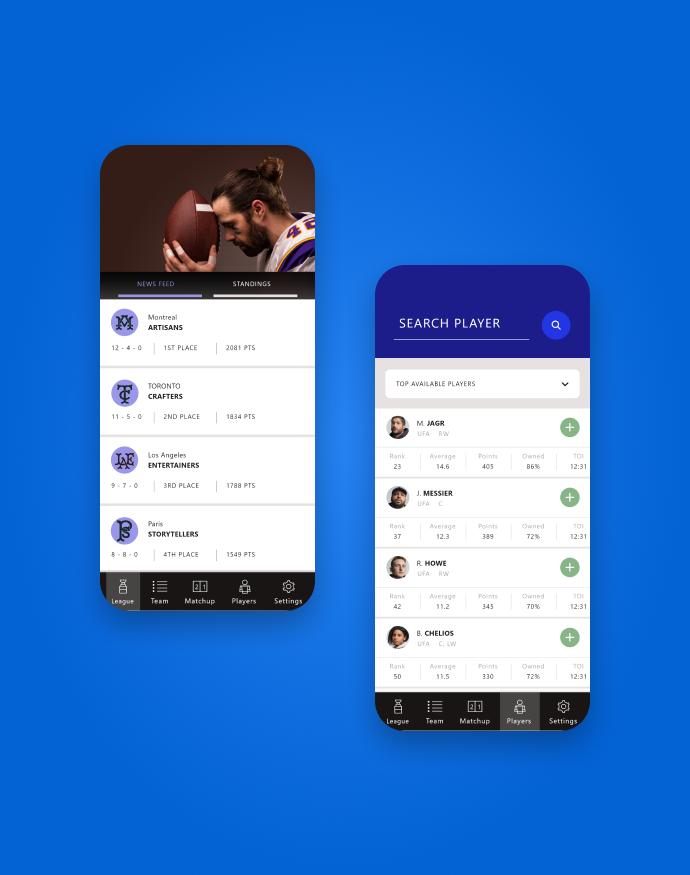
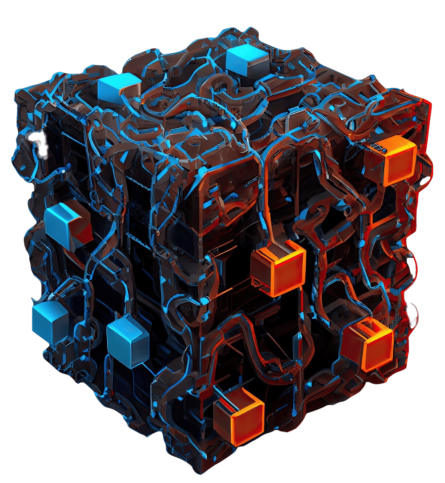

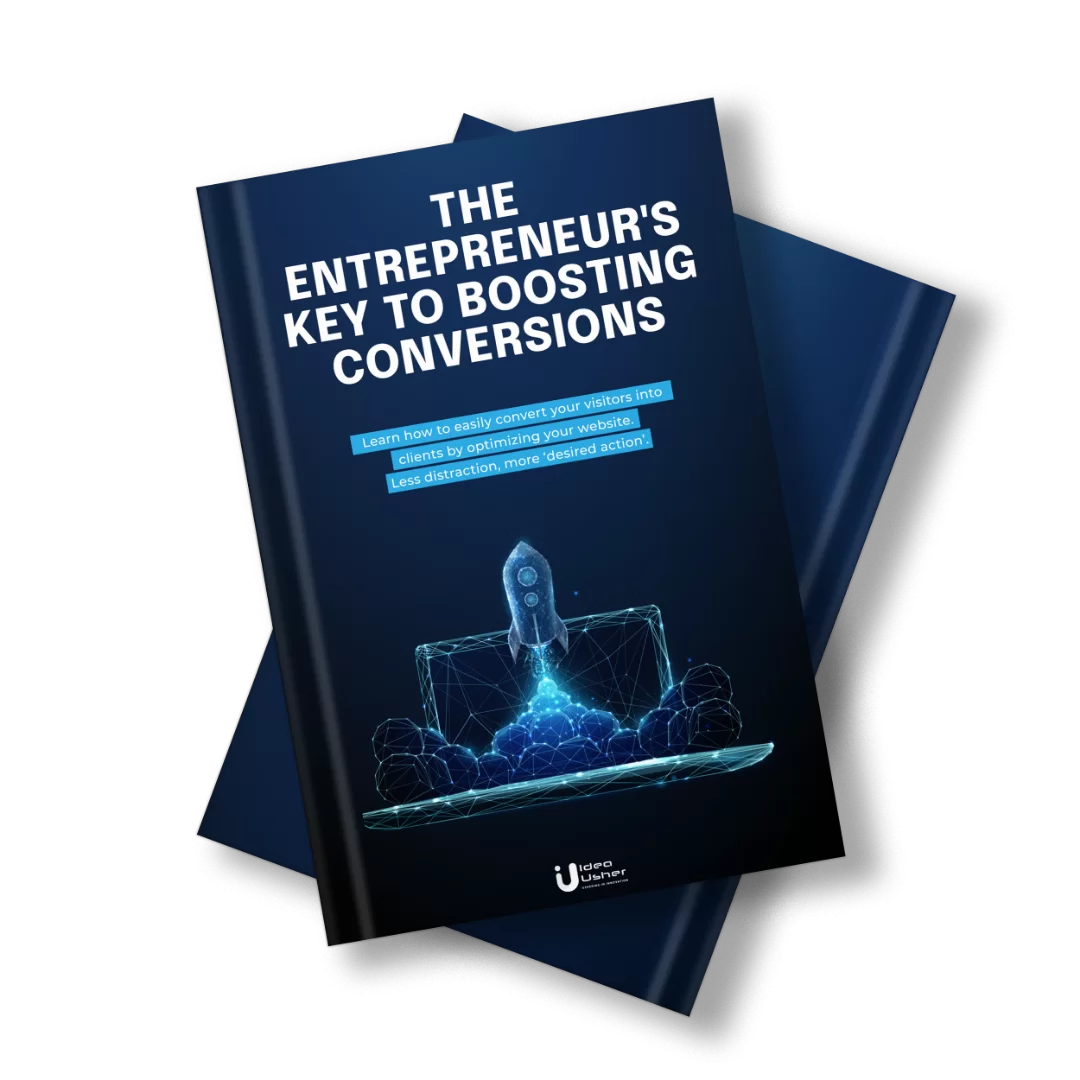
Rebecca Lal